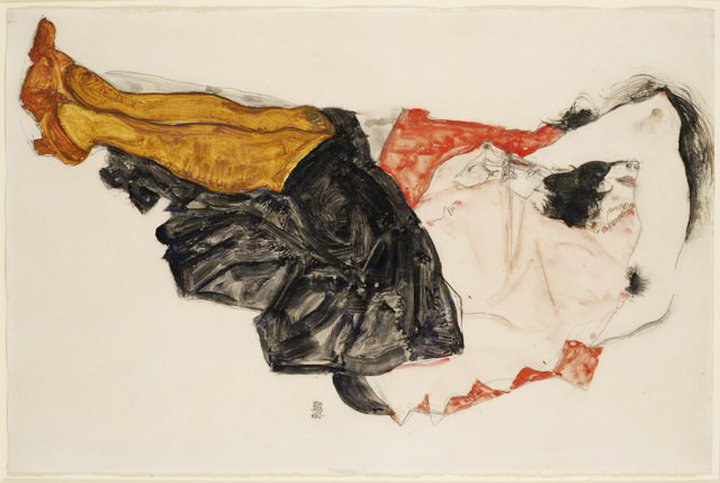A Manhattan judge on Thursday ordered two highly valued, early 20th century paintings looted by the Nazis returned to the heirs of an Austrian Jewish entertainer who’d first collected them, ruling that “a signature at gunpoint cannot lead to a valid conveyance.”
The decision by state Supreme Court Justice Charles Ramos is the first ruling on the merits in a 2½-year dispute over the paintings that some say could have implications for the wider fight by Jewish heirs to reclaim artwork looted en masse from their ancestors by the Third Reich. Regardless of broader impact, the immediate effect of Ramos’ decision is clear: Two prized and somewhat stark paintings, “Woman in Black Pinafore” (1911) and “Woman Hiding Her Face” (1912), estimated to be worth $5 million together and sitting in a Queens warehouse, are now directed to be transferred to the lawsuit’s plaintiffs. Although, Richard Nagy, a London-based art dealer and the suit’s defendant, said on Thursday through an attorney that he will appeal.
This content has been archived. It is available through our partners, LexisNexis® and Bloomberg Law.
To view this content, please continue to their sites.
Not a Lexis Subscriber?
Subscribe Now
Not a Bloomberg Law Subscriber?
Subscribe Now
LexisNexis® and Bloomberg Law are third party online distributors of the broad collection of current and archived versions of ALM's legal news publications. LexisNexis® and Bloomberg Law customers are able to access and use ALM's content, including content from the National Law Journal, The American Lawyer, Legaltech News, The New York Law Journal, and Corporate Counsel, as well as other sources of legal information.
For questions call 1-877-256-2472 or contact us at [email protected]


 “Woman Hiding Her Face” by Egon Schiele.
“Woman Hiding Her Face” by Egon Schiele.





